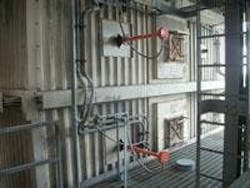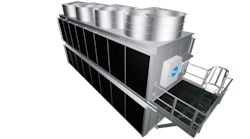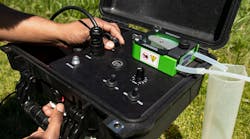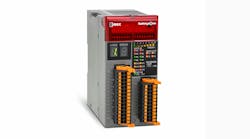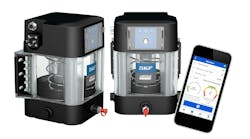The MARTIN® Sonic Horn is an acoustic cleaner that reduces system downtime, maintenance, and operating costs, while improving performance and prolonging equipment life. In addition to the low cost of ownership, acoustic cleaning helps avoid structural fatigue or damage, prevents dry particulate build-up, and increases system efficiency. Especially effective around pipes and behind obstacles, sonic energy de-bonds particulates with a 360-degree sweep, cleaning inaccessible parts. Sonic horns work by producing a low-frequency, high-pressure sound wave, which is created when compressed air flexes a titanium diaphragm in the sound generator. This sound wave is then magnified as it is emitted through the cleaner’s bell. The sound pressure causes dry particulate deposits to resonate and become fluidized, allowing them to be removed by constant gas flow or gravity. “Acoustic cleaning technology has been providing cost-saving solutions for decades,” commented Jeff Shelton, Multiport Specialist, from Martin Engineering. “It’s a proven technology that can improve throughput and reduce blockages.” There are 2 models of the sonic horn available. MARTIN® Model D-75 Sonic Horn has a fundamental frequency of 75 Hz and measures 92.07 inches (2339 mm) in length and weighs190 pounds (86.2 kg). This model has a wavelength of 14.75 feet (4.5 m). The MARTIN® Model D-230 Sonic Horn (230 Hz fundamental frequency) features a wavelength of 4.75 feet (1.5 m) and is 27.5 inches long (698.5 mm). It weighs 54.27 pounds (24.6 kg). Sonic Horns comply with OSHA dB regulations for vessel interiors, helping manufacturing facilities to comply with emissions regulations. MARTIN® Sonic Horns are well suited for use in boilers, heat exchangers, economizers, bag houses, selective catalytic reduction (SCR) processes, ID fans, electrostatic precipitators (ESP), silos, hoppers, cyclones, and air pre-heaters. Used in combination with Martin Engineering’s BIG BLASTER® Air Cannon technology, MARTIN® Sonic Horns provide a total cleaning and flow solution.
- helps avoid structural fatigue or damage
- prevents dry particulate build-up
- de-bonds particulates
